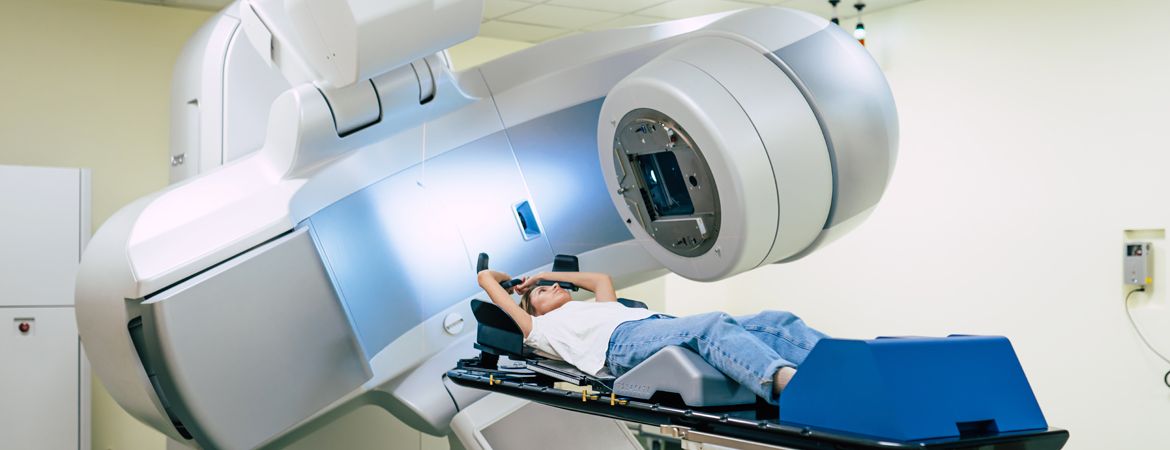
Radiotherapy is a commonly used method in oncology to treat cancer. In this comprehensive guide, you will learn about the different types of radiotherapy, how each method works, and how it is used in cancer treatment.
It is a treatment that uses high-energy radiation to kill cancer cells and shrink tumours. It is also referred to as radiation therapy or irradiation.
It is often used to treat a localised or early-stage disease that has not spread beyond the initial cancer site. It is also used to treat metastatic cancer, which has spread to other parts of the body.
Radiotherapy can be used on its own or in combination with other types of cancer treatment, including surgery, chemotherapy, and hormone therapy.
When is it used?
Radiotherapy can be used to treat many types of cancer, including:
- cervical cancer (cancer of the cervix)
- head and neck cancers
- breast cancer
- lung cancer
- prostate cancer
- gastrointestinal cancers (such as cancers of the stomach, liver, and bowel)

How does radiotherapy work?
External radiotherapy
External radiotherapy is one of the most common types of radiotherapy used in oncology. It involves using high-energy X-rays to destroy cancer cells. These rays are generated by a machine called a linear accelerator. External radiotherapy can be delivered externally, by directing the rays towards the cancer-affected area from outside the body, or internally, by placing a radioactive source inside the body near the tumour. This type of radiotherapy is often used to treat solid tumours, such as breast, lung, and prostate cancers.
Internal radiotherapy (brachytherapy)
Internal radiotherapy, also known as brachytherapy, is another type of radiotherapy used in oncology. Unlike external radiotherapy, brachytherapy involves placing a radioactive source directly inside the body, close to the tumour. This allows for a high dose of radiation to be delivered directly to the targeted area while minimising damage to surrounding healthy tissue. Brachytherapy can be used to treat various types of cancer, such as uterine, prostate, and skin cancers. It can be administered either permanently, where the radioactive source remains in place indefinitely, or temporarily, where the source is inserted for a set period before being removed. The decision to use internal radiotherapy depends on the type and location of the cancer, as well as the specific needs of the patient.

Conformal Radiotherapy
Conformal radiotherapy is an advanced radiotherapy technique used in oncology. Its aim is to deliver a precise dose of radiation to the tumour while sparing surrounding healthy tissues. This method utilises advanced imaging techniques, such as computed tomography (CT scan) and magnetic resonance imaging (MRI), to accurately map the shape and size of the tumour. These images are then used to plan the treatment so that the radiation beams conform to the shape of the tumour, thereby minimising damage to healthy tissues. Conformal radiotherapy can be used to treat various types of cancer, such as lung, brain, and prostate cancer. It offers significant advantages in terms of precision and reducing side effects compared to conventional radiotherapy techniques.
Stereotactic Radiotherapy
Stereotactic radiotherapy is a precise, targeted radiotherapy technique used in oncology. It delivers a high dose of radiation to a specific tumour while minimising damage to surrounding healthy tissues. This method makes use of advanced guidance and localisation systems, such as computed tomography (CT scan) and magnetic resonance imaging (MRI), to precisely locate the tumour in the patient’s body. Once the tumour is located, radiation beams are directed at it from multiple angles, allowing a high dose of radiation to be delivered directly to the tumour. Stereotactic radiotherapy is often used to treat brain tumours, lung tumours, and bone metastases. It offers significant advantages in terms of precision and reducing side effects compared to conventional radiotherapy techniques.
Helical Radiotherapy (Tomotherapy)
Helical radiotherapy, also known as tomotherapy, is an advanced radiotherapy technique used in oncology. It combines external radiotherapy with real-time computed tomography (CT scan) imaging to deliver a precise dose of radiation to the tumour.
This method employs a device called a helical tomograph, which is capable of rotating around the patient while delivering radiation beams. This allows the tumour to be targeted with high precision while sparing surrounding healthy tissues.
Helical radiotherapy is often used to treat tumours in difficult-to-reach or sensitive areas, such as the brain, the spine, and abdominal organs. It offers significant advantages in terms of precision and reducing side effects compared to conventional radiotherapy techniques.








